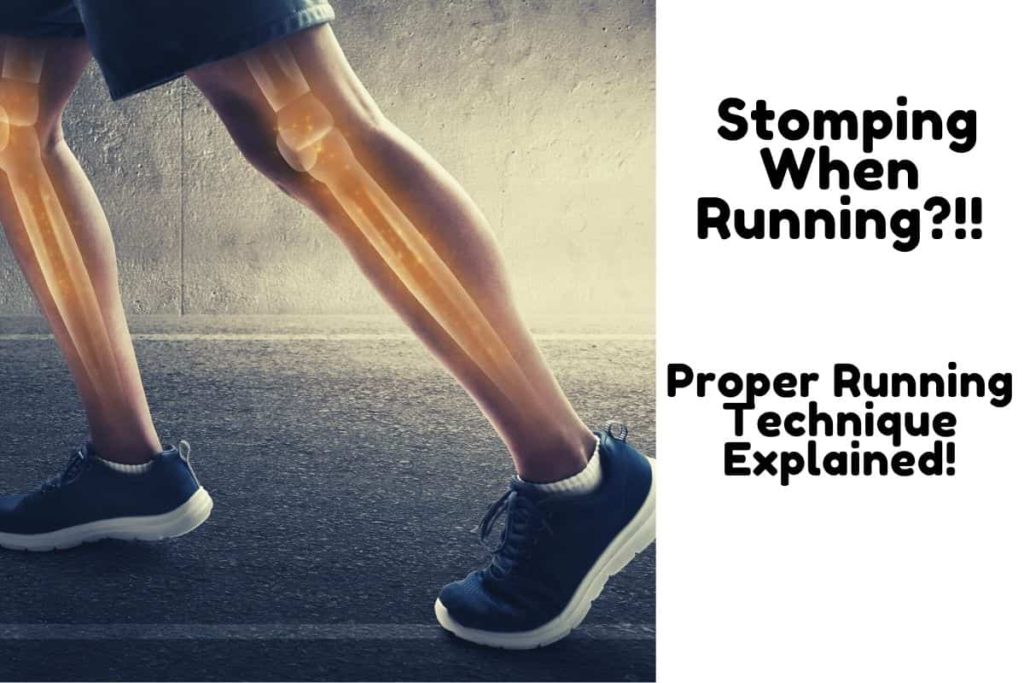When I watch people running races like the Olympic Marathon on television, it always looks so smooth and effortless. It’s almost like they are gliding through the air with their feet barely touching the ground.
For the majority of us, the act of running feels and looks quite different. Our strides are shorter and less efficient, our arms are held at awkward angles. Let’s not even think about what our faces must look like! And then there is the sound our feet make when they strike the pavement. At times that sound reminds me of a giant who is trying to tap dance while wearing a pair of shoes that are two sizes too big. Or like I’m wearing a pair of those Dutch wooden shoes.
The professionals are able to run with such a smooth and quiet stride. The question is, can the rest of us?
Human running stride is a combination of muscle movement and timing, or body mechanics. When people run, they train those muscles to be stronger and to move in a certain way. For beginning runners, the muscles are being taught how to switch from the motions of walking to those of running. Then as runners progress, the timing of those movements become gradually more rapid as the running pace increases.
Using that as evidence that runners have the ability to change their body mechanics, there’s no reason that a runner shouldn’t be able to adjust their stride to stop the stomp.
Why does it feel like you are stomping when running? The feeling of stomping while running is caused by the foot hitting the ground too early in the stride motion. The straighter the knee is at the time of impact, the more force that is going to be created. One reason this could happen is by leaning too far backward.
In addition to body lean, there is also a lot of debate in the running community about foot strikes. Is it better to land on the forefoot, the midfoot, or the rearfoot (heel)? Which type of runner you are – forefoot, midfoot or rearfoot striker – depends mostly on body positioning. (Source)
The majority of us are rearfoot or heel strikers. This is caused by leaning too far back when we run, and results in the most noise. Those who lean forward will strike forefoot, or toes first. Forefoot running is usually most effective for sprinting or uphill running. Too much of this style can lead to cramping. That leaves everyone else to be midfoot strikers, which is thought to be the most efficient style.
For more on this topic, check out our post How Do To Stop Triathlon Muscles Cramps? Prevention & Swift Treatments Techniques!
It is best not to directly try and change where your foot strike occurs. Instead, try to focus on developing strong running muscles and keeping good form.

How Can I Run More Quietly?
It is possible to run more quietly by keeping the back straight, abdomen engaged and looking forward during the run. Holding a more upright position will help the feet to hit the ground later in the stride. By striking when they are underneath the runner rather than in front or behind, the result will be a smoother and quieter running motion.
Rather than staring down at your feet, keep your gaze up. Look 20 meters down the path that you are running. Looking forward will help you to stay vertical and prevent the excessive leaning position that can lead to stomping.
Another tip for running more quietly is to wear a properly cushioned shoe.
Shoes that are worn out or not built for distance running are going to make more noise when they strike the ground. A properly cushioned shoe that is appropriate for your stride will impact softer and be quieter. See our previous article for more information on running shoe choices.
Why Am I so Heavy Footed when Running?
Being tired can lead to the feeling of heavy feet and legs. Running late in the day when you are already fatigued makes it difficult to keep good form.
If possible, try scheduling your runs for earlier in the day when you have more energy rather than waiting for the last possible moment. If you must run later in the day, then make sure you are eating and drinking properly to give your body enough fuel. (Source)
Sometimes when you are feeling the fatigue of the miles, it helps to exaggerate your running stride to wake your muscles up.
Another trick would be to incorporate a few seconds of high knees or butt kicks to regain efficiency in your stride.
On a side note, check out our post “Does Running Make Your Butt Bigger or Smaller? Does It Help Your Butt!“
How Do Runners Land Softer?
Runners land softer by practicing better body positioning and paying attention to their cadence. Running cadence is the number of times your feet strike the ground in a single minute.
The optimal cadence varies from person to person. The higher the number of foot strikes, the less time the foot spends on the ground. This quick turnover forces the runner to land softly so they can immediately push off and begin the next stride. Cadence can be increased by utilizing a slightly shorter stride. This can feel somewhat choppy at first but will start to feel more natural the more you do it.
As mentioned earlier, keeping the body from leaning too far forward will also help the feet to land softer. There is a balance though, since leaning too far backward will cause the feet to act as brakes and actively fight against your forward progress. The more efficient running position is a slight, barely noticeable forward lean, abdomen and glutes engaged, with the chest directly over the knees.
Some runners practice running barefoot to try and teach their body to run softer. This is best done very gradually and on very soft surfaces such as a golf course or on a sports field. The theory is that by running barefoot or in minimal running shoes, the foot will gain a better feel for the ground and will naturally shift to a more efficient pattern. (Source)
How Do I Lower My Running Impact?
To prevent injuries and improve your running form, try to incorporate stretching and strengthening exercises into your weekly routine. Not only will these practices keep you from hurting yourself, but they can also help you to lower your impact and improve race times.
Strengthening the core muscles helps your body to move more efficiently.
The more efficient we are, the longer we can run without feeling fatigued. It doesn’t take a lot of additional time to add in a few exercises a week, and the difference it makes can be quite dramatic.
Last but not least, try simply running slower
The faster we try to go, the less control we have over where and how our feet hit the ground. Running fast also creates more force. So instead, slow down and take control of your body.
- Think about your form and keep your back straight
- Pay attention to where and how your feet strike the path
- Increase your cadence by shortening your stride
By doing these three things alone, you’ll find that you are running with less impact than before. Combine those tips along with some strength training and proper shoes, and hopefully, you’ll be able to run quieter than ever!


